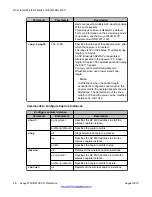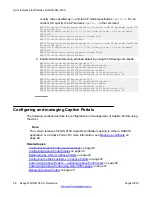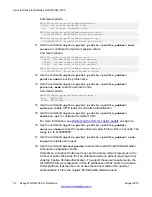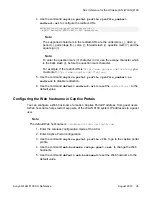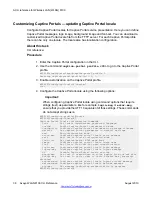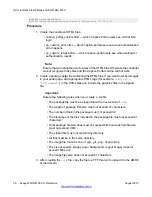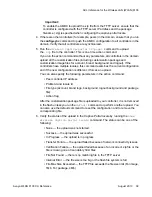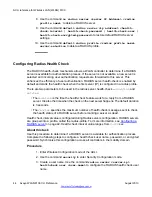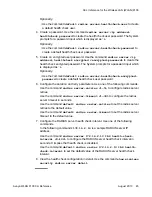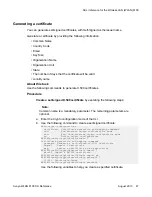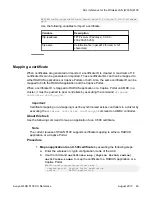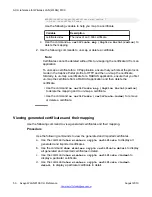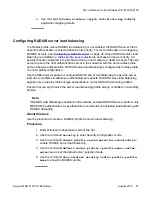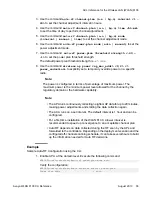
• Profile Max Size Exceeded — the Captive-portal profile disk usage exceeds
the limit (8Mb)
Managing Captive Portals
CLI reference:
WC8180#wireless captive-portal ?
Captive portal run time settings
client-deauthenticate Deauthenticate a specific client
tftp-get Execute TFTP client to get customization files
WC8180#wireless captive-portal client-deauthenticate ?
all Deauthenticate all clients
captive-portal-profile Deauthenticate the clients associated with
captive-portal profile
H.H.H Authenticated client MAC address
network-profile Deauthenticate the clients associatd with
network-profile
WC8180#wireless captive-portal client-deauthenticate network-profile ?
<1-64> Network profile ID
WC8180#wireless captive-portal client-deauthenticate captive-portal-profile ?
<1-10> Captive portal profile ID
AMDC#wireless captive-portal tftp-get ?
address Controller IP address
About this task
Use the following commands to manage Captive Portals.
Procedure
1. Enter the wireless configuration mode of the CLI.
2. Use the command
wireless captive-portal client-deauthenticate
all
to revoke authentication on all clients.
3. Use the command
wireless captive-portal client-deauthenticate
captive-portal-profile <Captive Portal profile Id>
to revoke
authentication on all clients associated with a particular Captive Portal profile.
4. Use the command
wireless captive-portal client-deauthenticate
<authenticated client MAC address>
to revoke authentication on a
specific client.
5. Use the command
wireless captive-portal client-deauthenticate
network profile <network profile Id>
to revoke authentication from all
clients associated with a particular network profile.
ACLI reference for Wireless LAN (WLAN) 8100
40 Avaya WLAN 8100 CLI Reference
August 2013

